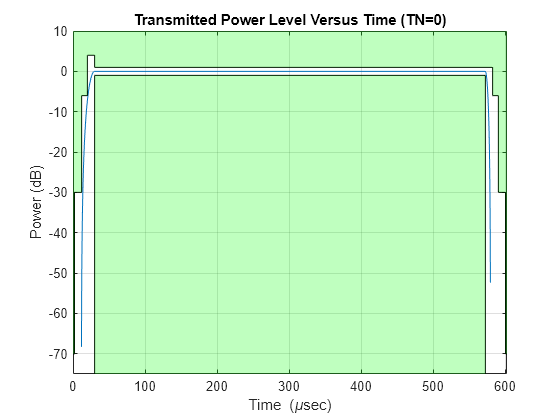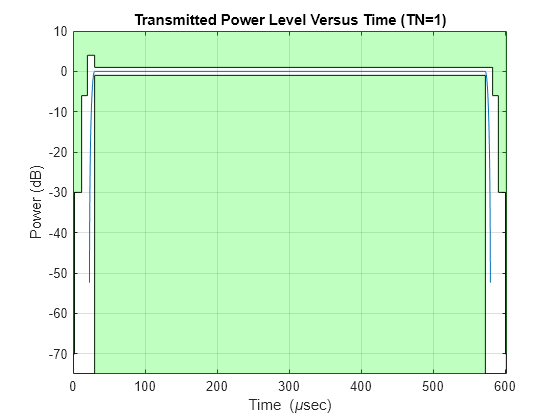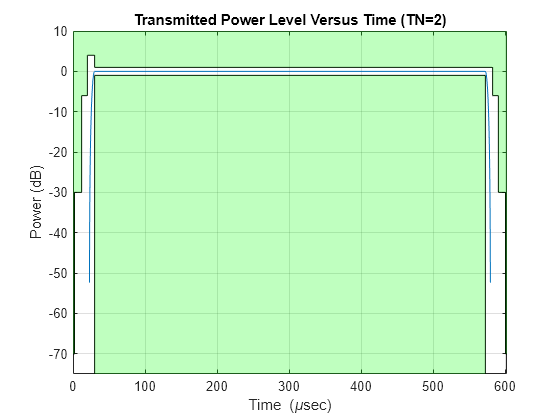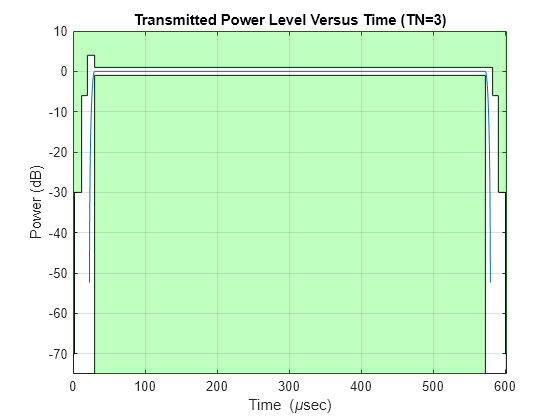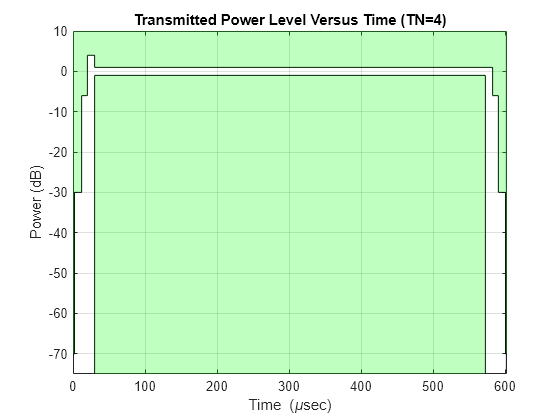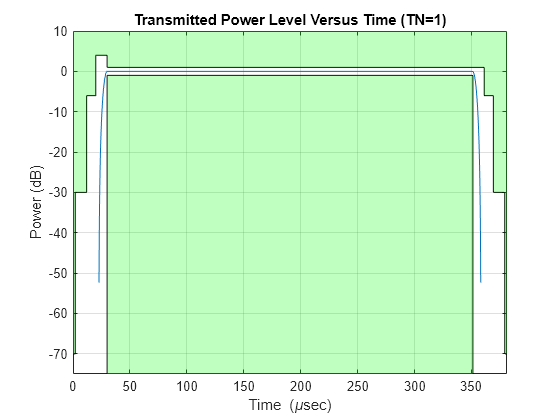gsmCheckTimeMask
Inspect GSM burst against time mask
Syntax
Description
gsmCheckTimeMask( plots the burst for
the first time slot and the upper and lower time masks for the input GSM configuration
object. The gsmCfg)RiseTime, RiseDelay,
FallTime, and FallDelay properties of the
configuration object define the power level versus time characteristics. For more
information, see Time Mask.
Examples
Input Arguments
Output Arguments
More About
References
[1] 3GPP TS 45.005. "GSM/EDGE Radio transmission and reception." 3rd Generation Partnership Project; Technical Specification Group Radio Access Network.
Extended Capabilities
Version History
Introduced in R2019b

